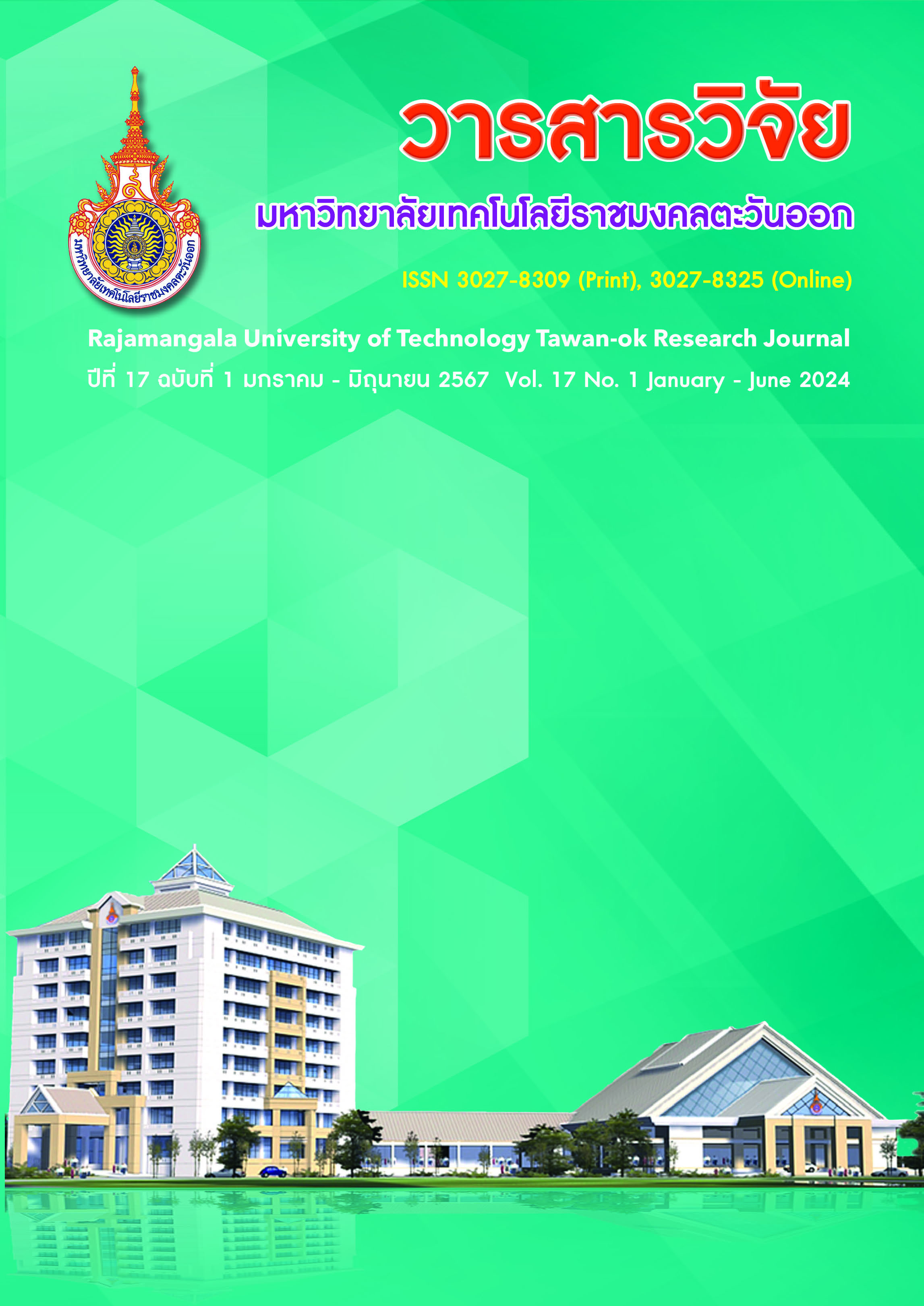Production Methods of Ready-to-Use Fermented Vinegar Starter Culture
Main Article Content
Abstract
Fermented vinegars are popular as healthy drinks due to their high nutritional value and ability to balance the various systems in the body. For example, reduces blood pressure, decreases the risk of cardiovascular disease, prevents infection and antivirus. However, the fermentation processes are complicated, and the procedures can take place only in the laboratories. Therefore, this study aimed to develop a ready-to-use vinegar starter culture for vinegar fermentation and convenient transportation.
In this study was conducted to develop dry starter culture for vinegar fermentation to facilitate production, transportation, and reduce microbial contamination. Raw materials were compared to the suitability of four substrates (rice flour, pineapple pulp, rice bran, and rice bran) for starter culture production. The additives that could reduce contamination in the production of dry starter culture for vinegar fermentation were also investigated. Moreover, the study investigated the optimum temperature and storage period for starter culture that could affect the efficiency of vinegar fermentation. Acetobacter aceti TISTR 354 was used in a semi-continuous fermentation process. The results showed that rice bran mixed with 95% ethanol and 0.2% propionic acid stored at 4 °C could reduce contamination and be stored for up to 5 weeks. From week 1 to 5, the average acetic acid production was 6.08% and 4.50%, respectively, which were significantly different (p < 0.05).
Article Details

This work is licensed under a Creative Commons Attribution-NonCommercial-NoDerivatives 4.0 International License.
References
Dung, N.T.P., Rombouts, F.M., & Nout, M.J.R. (2005). Development of defined mixed-culture fungal fermentation starter granulate for controlled production of rice wine. Innovative Food Science & Emerging Technologies, 6, 429-441.
Gullo Maria and Paolo Giudici. (2008). Acetic acid bacteria in traditional balsamic vinegar: Phenotypic traits relevant for starter cultures selection. International Journal of Food Microbiology, 125, 46-53.
Krusong, W., & Pongsawatmanit, R. (1989). Fermentation Technology. Bangkok: O.S. Printing House. (in Thai)
Laopaiboon, R., & Lotong, N. (1988). Production of vinegar starter culture in powder form. Proceedings of the 26th Kasetsart University Annual Conference (pp. 103-111). Bangkok: Kasetsart University. (in Thai)
Lotong, N. (1991). Fermented Strater Cultures and Production Technology. Bangkok: Funny Publishing Limited Partnership. (in Thai)
Mahinthronthep, B. (1986). Production of Vinegar Strater and the Influence of Herbs on the Microorganisms in Loog-Pang (Master Thesis). Kasetsart University, Bangkok. (in Thai)
Mahinthronthep, B., Laopaiboon, R., & Lotong, N. (1987). Production of Starter Cultures Using pure cultures for use in vinegar fermentation. Kasetsart Journal (Science), 21, 278-288. (in Thai)
Muangnoi. M., Ontoum, K., & Phothisuk, P. (2013). Production of fermented vinegar and ready-to-drink vinegar (Handout for Training). Bangkok: Institute of Food Research and Product Development, Kasetsart University. (in Thai)
Ontoum, K., Saithong, P., & Muangnoi. M. (2012). Production of Liquid Vinegar Strater Culture for Use in Vinegar Production. Bangkok: Institute of Food Research and Product Development, Kasetsart University. (in Thai)


